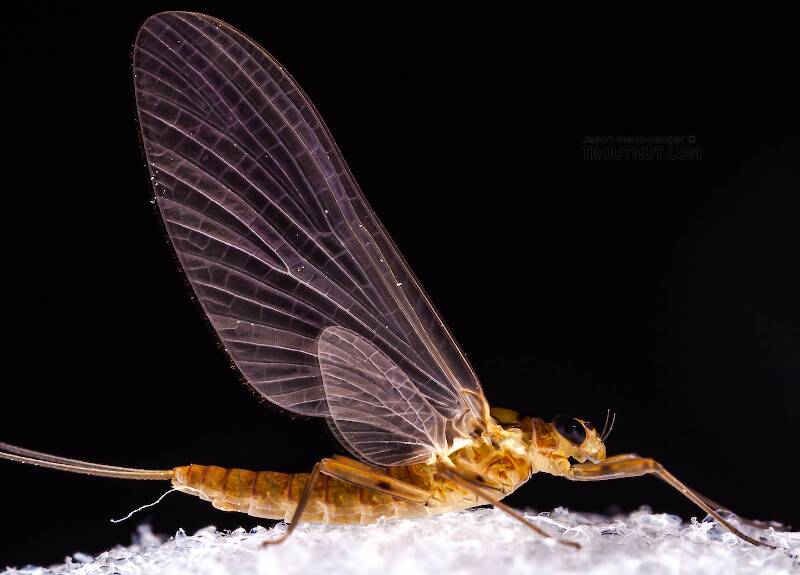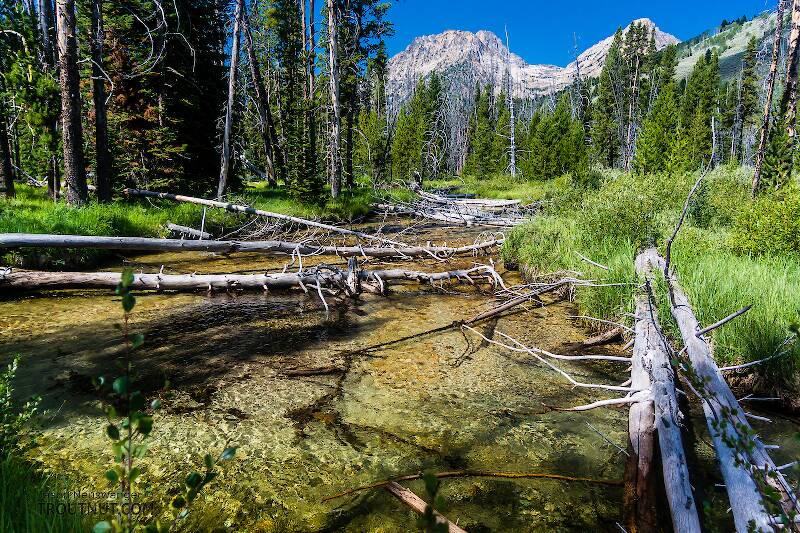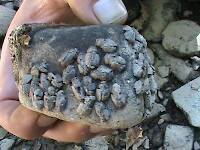
Blue-winged Olives
Baetis
Tiny Baetis mayflies are perhaps the most commonly encountered and imitated by anglers on all American trout streams due to their great abundance, widespread distribution, and trout-friendly emergence habits.
Featured on the forum

As far as I can tell, this species has only previously been reported from one site in Oregon along the Columbia gorge. However, the key characteristics are fairly unmistakable in all except for one minor detail:
— 4 small yellow spots on frons visible in photos
— Narrow occipital spinule row curves forward (but doesn’t quite meet on stem of ecdysial suture, as it's supposed to in this species)
— Short spinules on anterior margin of front legs
— Short rposterior row of blunt spinules on abdominal tergae, rather than elongated spinules dorsally
I caught several of these mature nymphs in the fishless, tiny headwaters of a creek high in the Wenatchee Mountains.
— 4 small yellow spots on frons visible in photos
— Narrow occipital spinule row curves forward (but doesn’t quite meet on stem of ecdysial suture, as it's supposed to in this species)
— Short spinules on anterior margin of front legs
— Short rposterior row of blunt spinules on abdominal tergae, rather than elongated spinules dorsally
I caught several of these mature nymphs in the fishless, tiny headwaters of a creek high in the Wenatchee Mountains.

Troutnut is a project started in 2003 by salmonid ecologist Jason "Troutnut" Neuswanger to help anglers and
fly tyers unabashedly embrace the entomological side of the sport. Learn more about Troutnut or
support the project for an enhanced experience here.

I collected this female dun together with a female spinner, a male dun, and a larger, damaged male dun.
GONZO on Apr 8, 2009April 8th, 2009, 11:07 am EDT
Both the process of elimination and reading published descriptions of Eastern Epeorus (pleuralis group) seem to leave fragilis as the only likely possibility for this specimen (as well as the related ones--#630, #631, and #633). The collection date is near the emergence range given for fragilis, and they match the description of this species in nearly every way except one: size.
Burian, et al. (2008) provide a key for Northeastern Epeorus adults that uses size as a significant means of distinguishing between fragilis and frisoni. They describe fragilis as less than 6.80mm. All of these specimens are larger, ranging from about 7mm-8.5mm. This puts them squarely within the range given for (the very similar) frisoni--6.83mm-9.42mm.
Although frisoni is described as being lighter in color than these specimens, two comments from the Burian publication are particularly interesting in this regard:
It would probably be reasonable to place these specimens as (size-anomalous) fragilis under the current taxonomic scheme. However, the stream in which they were captured seems to fit the above criteria pretty well. It would be very interesting to see someone like Konchu investigate this population further.
Burian, et al. (2008) provide a key for Northeastern Epeorus adults that uses size as a significant means of distinguishing between fragilis and frisoni. They describe fragilis as less than 6.80mm. All of these specimens are larger, ranging from about 7mm-8.5mm. This puts them squarely within the range given for (the very similar) frisoni--6.83mm-9.42mm.
Although frisoni is described as being lighter in color than these specimens, two comments from the Burian publication are particularly interesting in this regard:
At least one of us believes that a thorough search of suitable, higher elevation, cold streams in the White Mountains of New Hampshire, the Adirondacks of New York, and the Gaspe area of Quebec should result in the discovery of several new records [of frisoni].
The habitat association of E. frisoni with cold (even in summer), high gradient, minimally disturbed streams at or above 1200' (~365m) could be used to identify some of the best high elevation lotic habitats for conservation purposes. Variation among the New England subset of the eastern Nearctic genus Epeorus strongly points to the need for a full revision of this genus.
It would probably be reasonable to place these specimens as (size-anomalous) fragilis under the current taxonomic scheme. However, the stream in which they were captured seems to fit the above criteria pretty well. It would be very interesting to see someone like Konchu investigate this population further.
Troutnut on Apr 8, 2009April 8th, 2009, 4:53 pm EDT
Sounds like a good fit. The size difference leaves a pretty big question mark over this ID, but for a relatively obscure species it's quite possible the full size range isn't fully documented. In such an isolated system high in the Catskills.
I can't tell the general audience where exactly these flies are from, but it's a small stream high in the Catskills that matches the description Gonzo found pretty well.
I can't tell the general audience where exactly these flies are from, but it's a small stream high in the Catskills that matches the description Gonzo found pretty well.
Jason Neuswanger, Ph.D.
Troutnut and salmonid ecologist
Troutnut and salmonid ecologist
Quick Reply
Related Discussions
Topic
Replies
Last Reply
1
Oct 28, 2008
by GONZO
by GONZO
7
May 9, 2012
by Entoman
by Entoman
4
Sep 4, 2012
by Entoman
by Entoman
0
May 19, 2007
by GONZO
by GONZO
0
May 3, 2007
by Troutnut
by Troutnut
5
Dec 4, 2008
by Beardius
by Beardius



